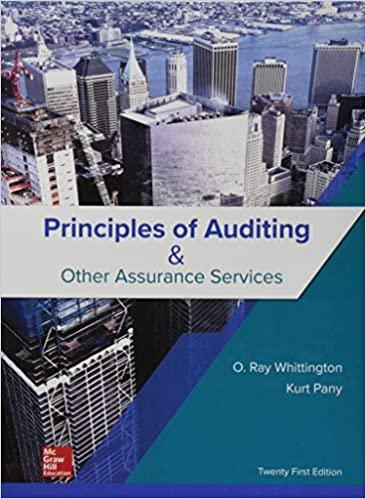4. The following balance sheet is for Northern Aviation, a manufacturing company specializing in design and production of aviation equipment used in the maintenance and repair of aircraft. All figures are in millions of dollars. The following facts also apply to Northern Aviation: - Notes payable currently cost 10% annually. However, the amount of notes payable fluctuates over the year since these loans are used to finance receivables and inventories on a seasonal basis. As a result, these loans are not part of permanent capital. - The long-term debt consists of 20-year, annual payment mortgage bonds with a coupon rate of 8%. Currently, these bonds provide a yield to investors of rd=12%. If new bonds are sold, they would have a 12% yield to maturity. - The perpetual preferred stock has a $100 par value, pays a quarterly dividend of $2, and has a yield to investors of 11%. New perpetual preferred stock would have to provide the same yield to investors and the company would incur a 5% flotation cost to sell it. - The company has 4 million shares of common stock outstanding. P P0=$20, but the stock has recently traded in the price range of $17 to $23. Do =$1 and EPS0=$2. ROE based on average equity was 24% last year, but management expects to increase this return on equity to 30%. Security analysts and investors are not generally aware of management's optimism in this regard. - Betas, as reported by security analysts, range from 1.3 to 1.7; the T-bond rate is 10%; and the RPM is estimated by various brokerage houses to range from 4.5% to 5.5%. Some brokerage house analysts report forecasted growth rates in the range of 10% to 15% over the foreseeable future. - Northern Aviation's financial vice president recently polled some pension fund investment managers who hold the company's securities regarding what minimum rate of return on the company's common would make the willing to buy the common rather than Northern Aviation's bonds, given that the bonds current yield is 12%. The respond suggested a risk premium over the bonds of 4 to 6 percentage points. - Northern Aviation is in the federal-plus state tax bracket of 26%. - Northern Aviation's principal investment banker predicts a decline in interest rates, with rd falling to 10% and the T-bond rate to 8%, although the bank acknowledges that an increase in the expected inflation rate could lead to an increase rather than a decrease in interest rates. Issume that you have been hired by Northern Aviation as a financial analyst and that your oss, the treasurer, has asked you to estimate the company's WACC under the assumption that o new equity will be issued. 4. The following balance sheet is for Northern Aviation, a manufacturing company specializing in design and production of aviation equipment used in the maintenance and repair of aircraft. All figures are in millions of dollars. The following facts also apply to Northern Aviation: - Notes payable currently cost 10% annually. However, the amount of notes payable fluctuates over the year since these loans are used to finance receivables and inventories on a seasonal basis. As a result, these loans are not part of permanent capital. - The long-term debt consists of 20-year, annual payment mortgage bonds with a coupon rate of 8%. Currently, these bonds provide a yield to investors of rd=12%. If new bonds are sold, they would have a 12% yield to maturity. - The perpetual preferred stock has a $100 par value, pays a quarterly dividend of $2, and has a yield to investors of 11%. New perpetual preferred stock would have to provide the same yield to investors and the company would incur a 5% flotation cost to sell it. - The company has 4 million shares of common stock outstanding. P P0=$20, but the stock has recently traded in the price range of $17 to $23. Do =$1 and EPS0=$2. ROE based on average equity was 24% last year, but management expects to increase this return on equity to 30%. Security analysts and investors are not generally aware of management's optimism in this regard. - Betas, as reported by security analysts, range from 1.3 to 1.7; the T-bond rate is 10%; and the RPM is estimated by various brokerage houses to range from 4.5% to 5.5%. Some brokerage house analysts report forecasted growth rates in the range of 10% to 15% over the foreseeable future. - Northern Aviation's financial vice president recently polled some pension fund investment managers who hold the company's securities regarding what minimum rate of return on the company's common would make the willing to buy the common rather than Northern Aviation's bonds, given that the bonds current yield is 12%. The respond suggested a risk premium over the bonds of 4 to 6 percentage points. - Northern Aviation is in the federal-plus state tax bracket of 26%. - Northern Aviation's principal investment banker predicts a decline in interest rates, with rd falling to 10% and the T-bond rate to 8%, although the bank acknowledges that an increase in the expected inflation rate could lead to an increase rather than a decrease in interest rates. Issume that you have been hired by Northern Aviation as a financial analyst and that your oss, the treasurer, has asked you to estimate the company's WACC under the assumption that o new equity will be issued








